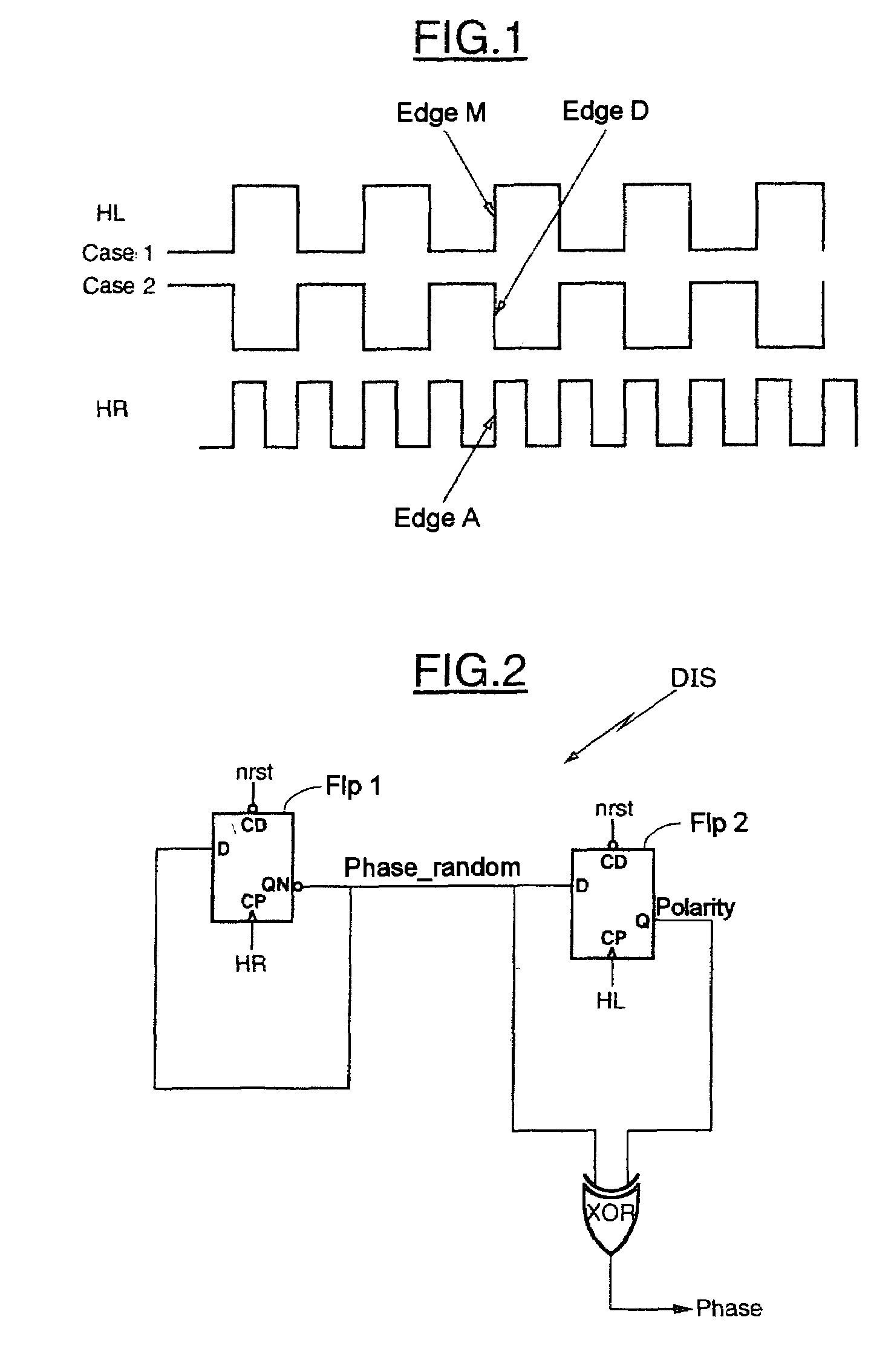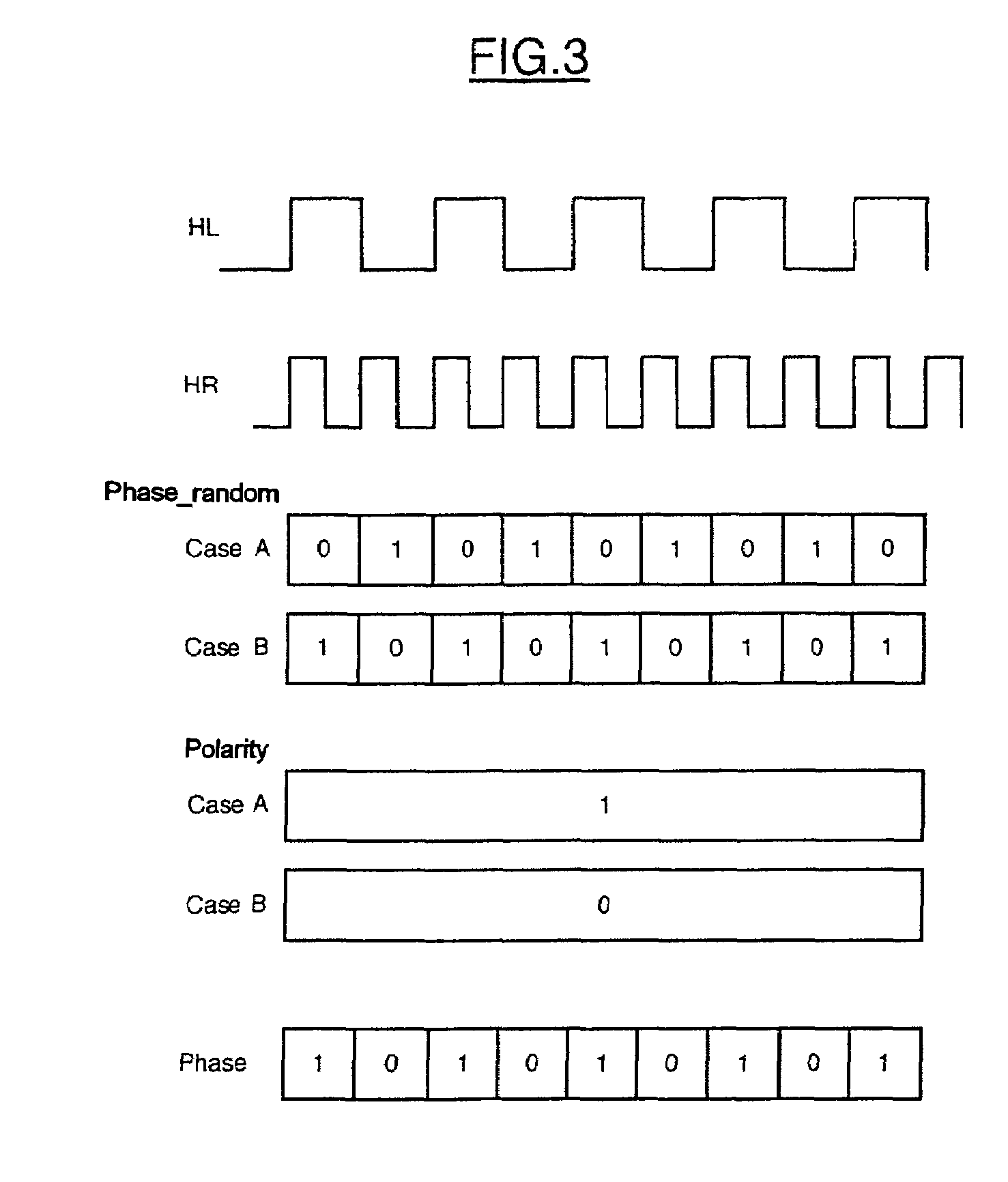Method of detecting the relative positioning of two signals and corresponding device
a technology of relative positioning and detection method, which is applied in the direction of transmission, transmission system, pulse automatic control, etc., can solve the problems of instability and the approach of the prior art that greatly complicate the management of the clock domain, and achieve the effect of limiting the risk of data loss and more tim
- Summary
- Abstract
- Description
- Claims
- Application Information
AI Technical Summary
Benefits of technology
Problems solved by technology
Method used
Image
Examples
case 1
[0027 illustrates a first configuration where the two clocks are active on edges of like polarity such that a rising edge A of the fast clock HR corresponds to a rising edge M of the slow clock HL. Case 2 illustrates another configuration where the two clocks are active on edges of opposite polarities such that a rising edge A of the fast clock HR corresponds to a falling edge D of the slow clock HL.
[0028]In the example illustrated in FIG. 1, the two clock signals HL and HR are aligned, that is to say an edge of the clock signal Edge A, corresponds to an edge of the clock signal HL. However, during the embodiment of the circuit, the technology of the electronic components used may generate a shift between the edges of the clock signals.
[0029]Furthermore, the frequency of the clock signal HR is n times higher than the frequency of the clock signal HL. In this example, n=2, however, n may be any integer greater than 1.
[0030]Referring now to FIG. 2, a device DIS in accordance with the ...
case b
[0035 represents the situation where the first value taken by the signal Phase_random is “1”. In this case, the signal Phase_random takes successively the values “1” and then “0”, at the frequency of the fast clock signal HR.
[0036]Accordingly, as the values of the signal Phase_random follow case A or case B, the signal generated by the flip-flop Flp 2, Polarity, evolves according to two cases, case A or case B. The signal Polarity evolves according to case A if the signal Phase_random evolves also according to case A. In this case, the signal Polarity takes the value “1” regardless of the value of the signal Phase_random. The signal Polarity evolves according to case B if the signal Phase_random evolves according to case B. In this case, the signal Polarity takes the value “0” regardless of the value taken by the signal Phase_random.
[0037]The signal Phase is generated by the “EXCLUSIVE OR” logic gate, XOR. It is recalled that according to the truth table of the “EXCLUSIVE OR” functi...
PUM
 Login to View More
Login to View More Abstract
Description
Claims
Application Information
 Login to View More
Login to View More - R&D
- Intellectual Property
- Life Sciences
- Materials
- Tech Scout
- Unparalleled Data Quality
- Higher Quality Content
- 60% Fewer Hallucinations
Browse by: Latest US Patents, China's latest patents, Technical Efficacy Thesaurus, Application Domain, Technology Topic, Popular Technical Reports.
© 2025 PatSnap. All rights reserved.Legal|Privacy policy|Modern Slavery Act Transparency Statement|Sitemap|About US| Contact US: help@patsnap.com



